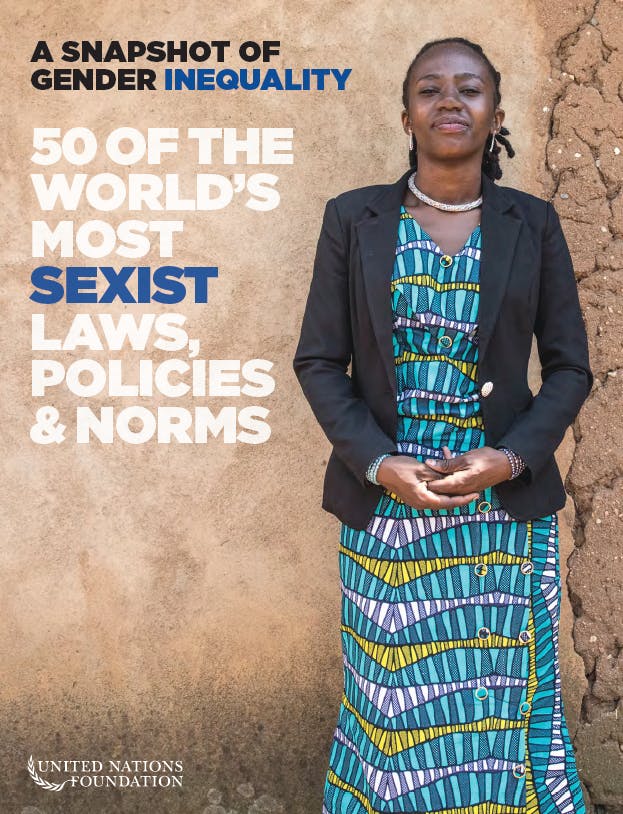Across the globe, girls and women are being held back in nearly every sphere of life — from gender inequality in the workplace and the classroom to discrimination in the hospital room and the home.
The UN Foundation surveyed the latest global research on the most sexist laws and norms from some of the planet’s most authoritative sources, including the World Bank’s Women, Business and the Law team; UN Women; and the UN Statistics Division.
This report, “50 of the World’s Most Sexist Laws: A Snapshot of Gender Inequality,” highlights 50 of the most egregious, absurd, and discriminatory examples of gender inequality in the world.
In the Workplace
34% of countries restrict women from working in certain jobs or industries.
In the Home
28 countries have no laws addressing domestic violence.
In Healthcare
Globally, only 56% of women are able to make their own decisions about their sexual and reproductive health and rights.
In Technology
An analysis of 133 artificial intelligence (AI) systems across industries since 1988 found that 44.2% demonstrate gender bias, with 25.7% exhibiting both gender and racial bias.
Understanding how sexist laws, policies, and norms are holding women back is a key first step. Now it’s time to rewrite how girls and women are treated under the law — and push harder for a gender-equal future.
